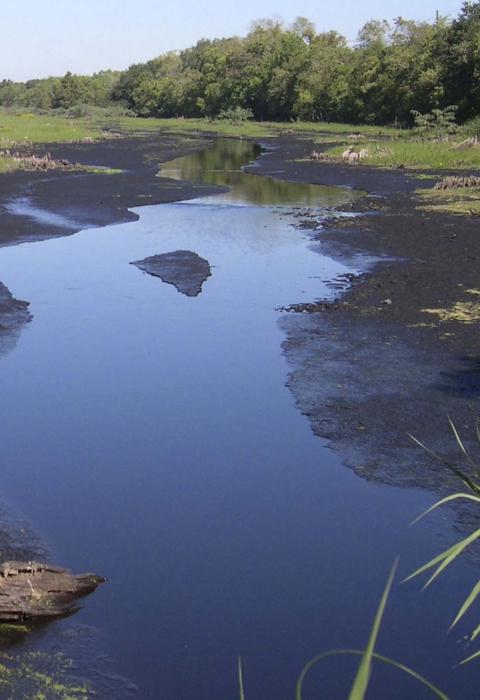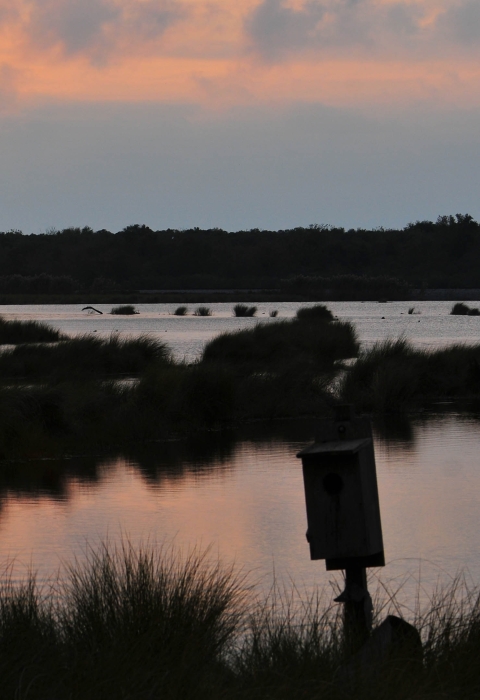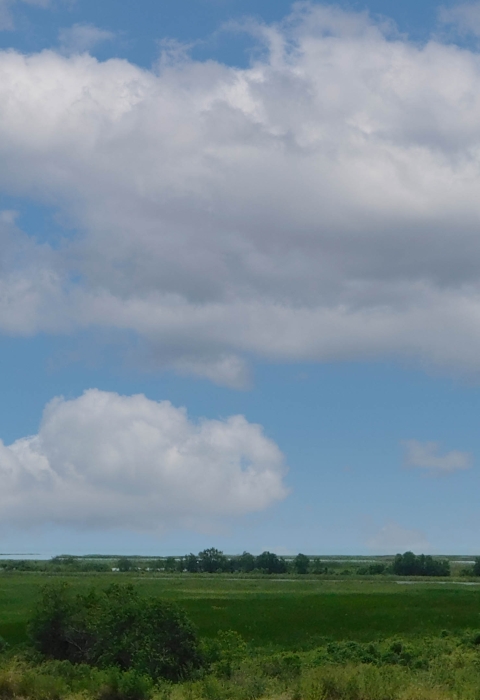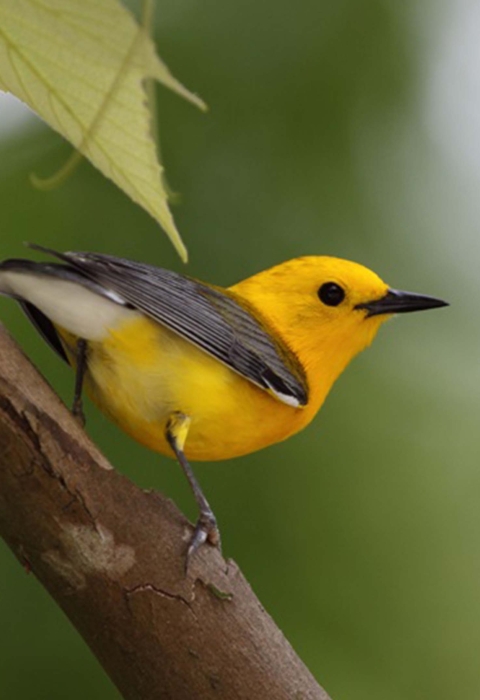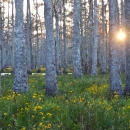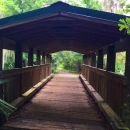About Us
Bayou Sauvage Urban National Wildlife Refuge, established in 1990, contains a variety of wildlife habitats, including patches of bottomland hardwood forest; freshwater, brackish and estuarine tidal marshes; lagoons; canals; and natural bayous. The refuge derives its name from the Bayou Sauvage waterway, pronounced “Bye-you So vage” which means “Wild Bayou.” The Bayou Sauvage waterway was once the primary east/west route into and out of the City of New Orleans.
An important stopover along the Mississippi Flyway, these diverse habitats support approximately 340 bird species throughout the year. The American alligator is a common sight at the refuge. Most of the refuge is located inside hurricane protection levees built to protect New Orleans from storm surge and flooding. Because the levees interrupt the natural water flow, a network of pumps and flap gates regulates seasonal water levels. Water is managed to support the summer growth of emergent grasses and provide waterfowl with winter food and sheltering areas. Rainfall is the main source of water for these freshwater marshes. Water levels fluctuate with seasons, rainfall, and water management practices.
It is with respect that we acknowledge that the refuge is on the ancestral lands of the Tchefuncte culture whose villages were here hundreds of years B.C.E. and later the "Chapitoulas," or ‘river people’ as they called themselves, and the Choctaw tribe who came in diaspora.
Our Mission
Legislation designated that the refuge should serve the following purposes:
- Enhance the populations of migratory, shore, and wading birds within the refuge.
- Encourage natural diversity of fish and wildlife species within the refuge.
- Protect the threatened and endangered species and otherwise to provide for the conservation and management of fish and wildlife within the refuge.
- Fulfill the international treaty obligations of the United States respecting fish and wildlife.
- Protect the archaeological resources of the Refuge.
- Provide opportunities for fish and wildlife-dependent public uses and recreation in an urban setting.
Other Facilities in this Complex
Bayou Sauvage Urban National Wildlife Refuge is managed as part of the Bayou Sauvage Urban National Wildlife Refuges Complex. The National Wildlife Refuges in Southeast Louisiana are part of a rich ecological system which includes marshes, pine and bottomland hardwood forests, lakes, barrier islands, swamps and bayous. Ranging from the marshy delta at the mouth of the Mississippi, to the wetlands that help protect New Orleans from hurricanes and provide a nursery to the fisheries that support the region’s food economy, to the wild bayous of the Atchafalaya Basin; your Southeast Louisiana National Wildlife Refuges preserve wildlife, habitat, and recreation opportunities representative of this unique part of the country.
All of the Southeast Louisiana National Wildlife Refuges are open to public visits for nature-based recreational enjoyment. Priority public uses are hunting, fishing, wildlife observation, wildlife photography, environmental education, and interpretation.
The refuge complex headquarters is located at 61389 Hwy 434, Lacombe, Louisiana 70445. This site also hosts the Bayou Lacombe Visitor Center and has walking trails that wind through an historic garden site and along Bayou Lacombe.
